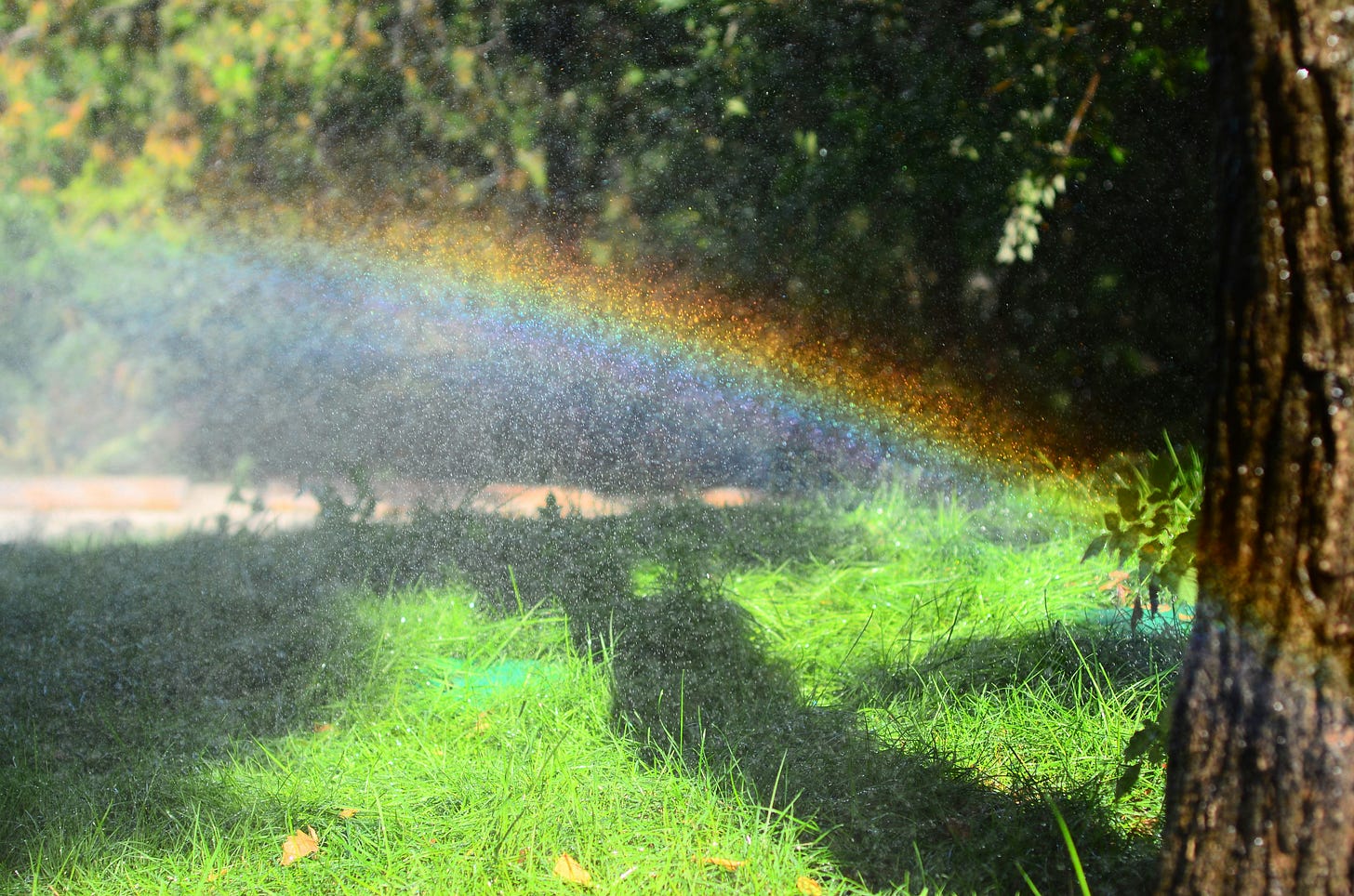Cass Marketos | October 15, 2025
The Geosmin Edition
On earth's own scent, and why we can smell it better than sharks smell blood.
Cass Marketos (CM) is a friend of WITI. She’s built communities at Kickstarter, Google, and the Obama White House, and today, she’s a Los Angeles-based compost artist, writer, and community volunteer. She’s got a newsletter on compost you should subscribe to, and her first WITI is also worth re-reading here.
Cassandra here. On April 23, 1891, the French chemist Pierre Eugène Marcellin Berthelot and Monsieur G. Andre presented a short paper at a meeting of the French Academie des Sciences, titled “Sur l’odeur propre de la terre.” In English: “On the earth’s own smell.”
They theorized that the scent of earth was related to a plant’s “essential oils,” and released into the air when displaced by rain. They were directionally correct, though the actual chemical compound and its associated processes remained undiscovered for the next eighty years. Then, in 1965, the chemists Nancy Gerber and Hubert Lechevalier, also French, isolated and named “geosmin” (meaning “earth smell”), having determined that it derived from a special genus of bacteria, Streptomyces, that live in the soil.
Why is this interesting?
Bacteria in the Streptomyces genus play an expansive and central role in decomposition. They break down complex organic matter, help to release nutrients into the soil, make other nutrients available for plant uptake, and produce a range of essential bioactive compounds, including antibiotics.
Geosmin is just one byproduct of the life cycle of these bacteria, released simultaneously as they form spores for reproduction. Its earthy odor acts like a signal, attracting tiny soil animals like springtails, which brush against the spores, carry them on their bodies, and spread them to new places.
Humans can detect geosmin at incredibly low levels—far lower than most other animals, as low as 100 parts per trillion. That’s better than sharks can smell blood in water. How extraordinary. The implication, of course, is that the odor is significant to our survival. Centuries ago, it likely helped us locate safe drinking water and fertile land for crops.
From the Microbiology Society: “We can safely assume that the time-traveller visiting the planet as it was about 440,000,000 years ago would recognise the familiar smell of soil, as the earliest land plants collaborated with the first streptomycetes to generate protocompost.”
In that sense, geosmin doesn’t just signal “earth” to us, then, but specifically good earth. It means healthy, rich soil—teeming with life, invisible but deeply felt, threaded all the way into the oldest parts of our molecular formation.
Fascinatingly, scientists also think Streptomyces might represent one of the earliest “trial runs” in nature’s move from being single-celled to being multicellular. In other words, it was probably one of several early experiments in evolution, as life was trying out how to organize multiple cells into a single, more complex organism.
I see evidence of Streptomyces in my compost all the time, most often as I’m turning the heap. As they grow in volume and mature, they become visible as powdery gray blooms. As ever, it feels remarkable that such a simple and intuitive process as piling organic matter into a heap can produce such a wildly complex and essential property for all of life. Miracles, all around us. (CM)
